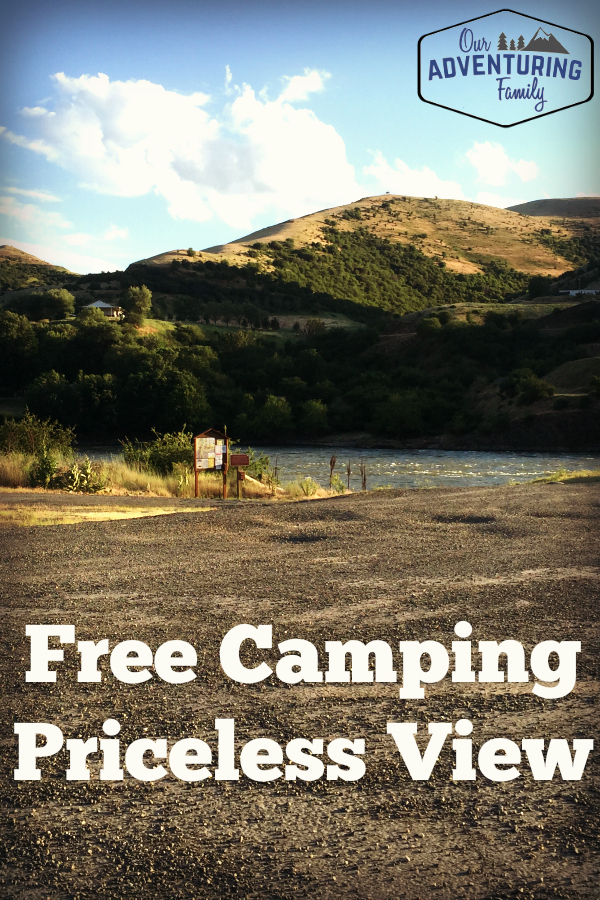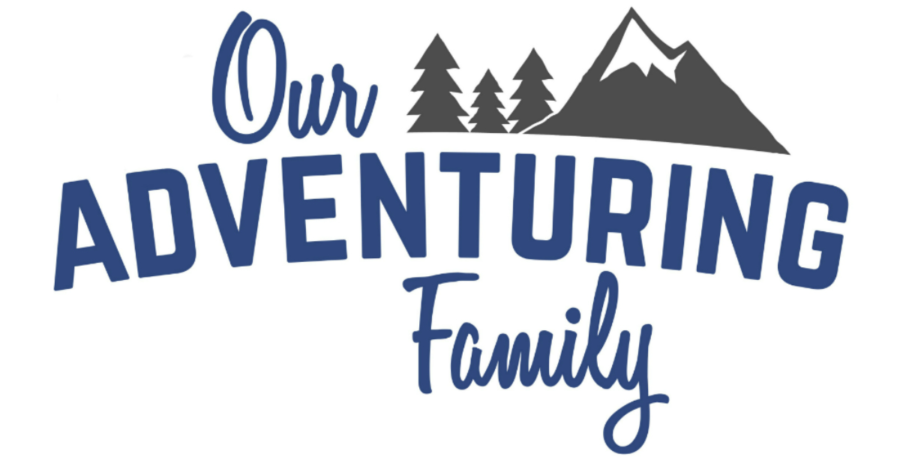This post may contain affiliate links. As an Amazon Associate I earn from qualifying purchases, but there is no additional cost for you. Please see my Disclosure page for more information.
After we left Waterton Lakes, we headed south into Idaho. We spent a couple days driving around northern Idaho, scoping out possible areas we’d like to move to in a few years. Our criteria mainly consists of an area that gets snow in the winter, and has a nice mix of mountains, trees, and meadows. FYI, that would be the area between Sandpoint and Coeur d’Alene. The flat valley is surrounded by tree-covered mountains, and there’s lakes nearby, which is even better. Now if only people would decide it was a hideous place to live and stop moving there and driving up prices 🙂 It’ll be a few more years before we can buy land, and I’m afraid prices are only going to go up between now and then.
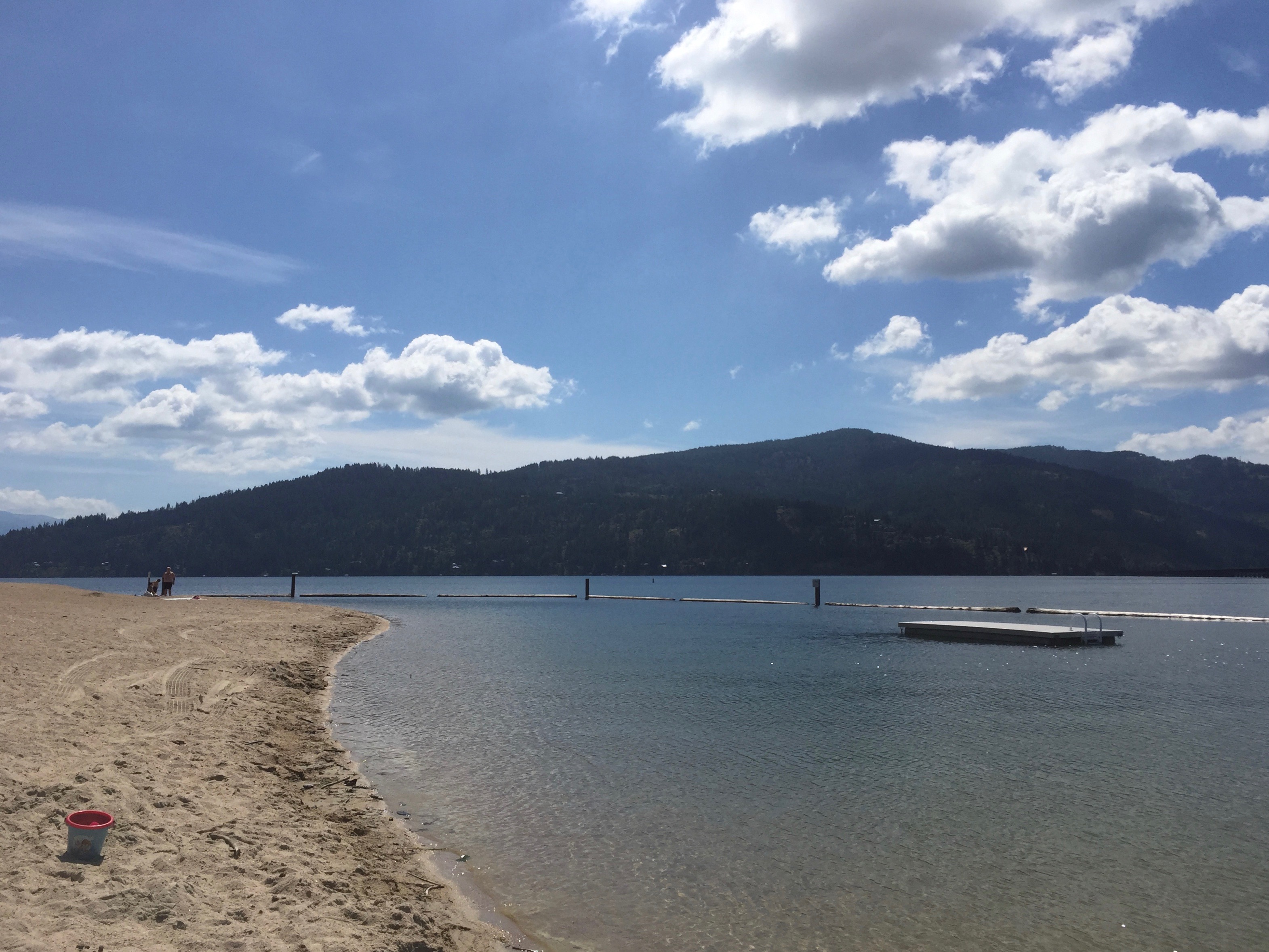
We stopped to check out Lake Pend Oreille. We were able to find free parking for the RV and car in the City Beach lot, and we explored City Beach, which was also free. It’s a beautiful park and a nice town, but we didn’t have nearly enough time to thoroughly explore. One more place we’ll have to come back to when we have more time.
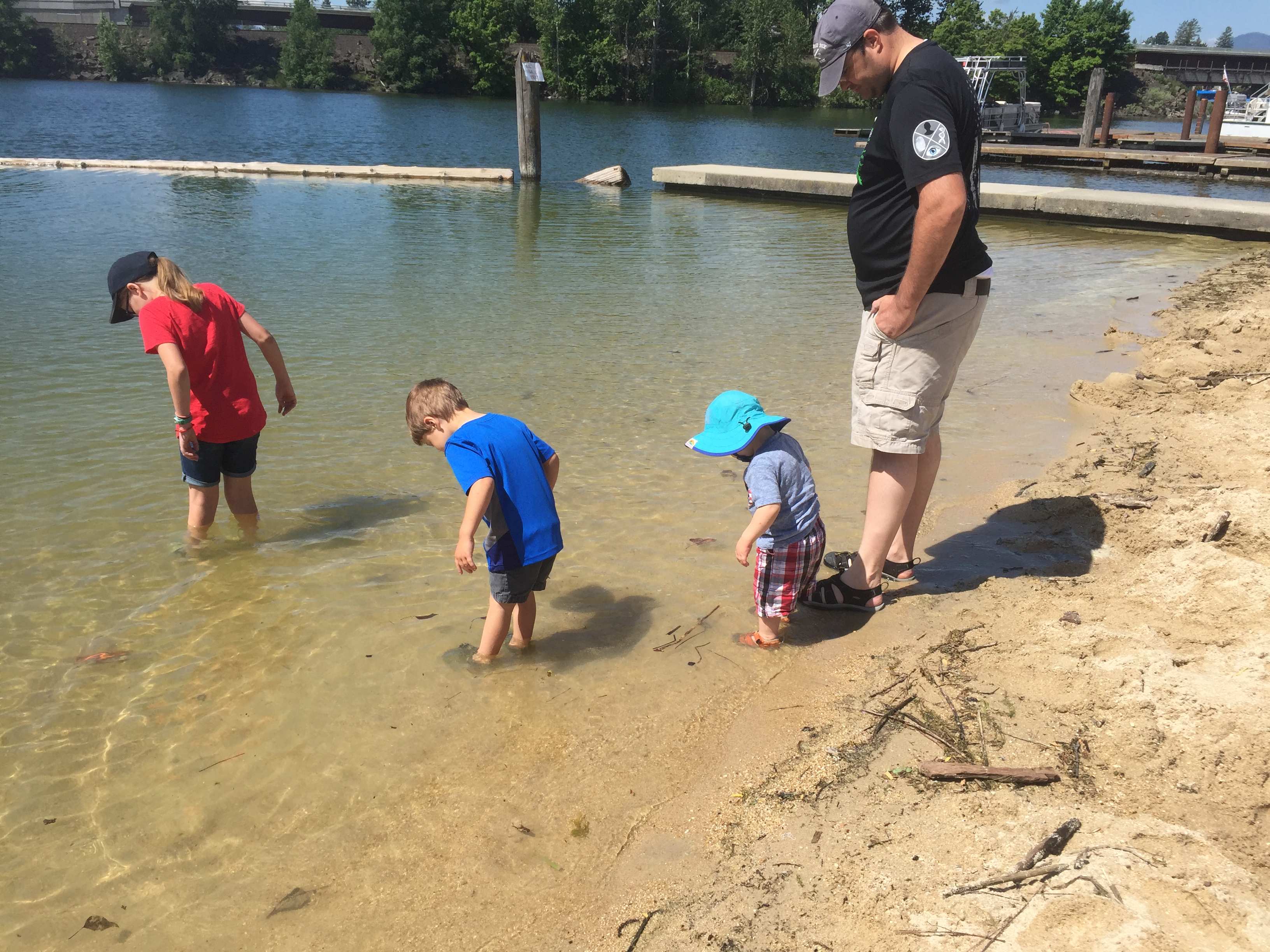
We spent the night at the county fairgrounds in Sandpoint and had a nice time chatting with the couple staying next to us. The campground is fairly new, and inexpensive ($25 for water and electric hookups, with a dump on site). We were able to get a spot without a reservation, but there were only a couple open spots in the park. We’d tried finding a boondocking spot in the area, but were coming up empty, so when we found the campground on the Allstays app, we decided to give it a try. There were several other families in the campground, but the evening rainstorms kept everyone inside, so our kiddos didn’t get a chance to play with the other kiddos.
Wondering what boondocking is? It’s camping in an RV without water, electric, or sewer hookups. Solar panels or generators may be used to provide power, and water is limited to what’s in your tanks or what you haul in.
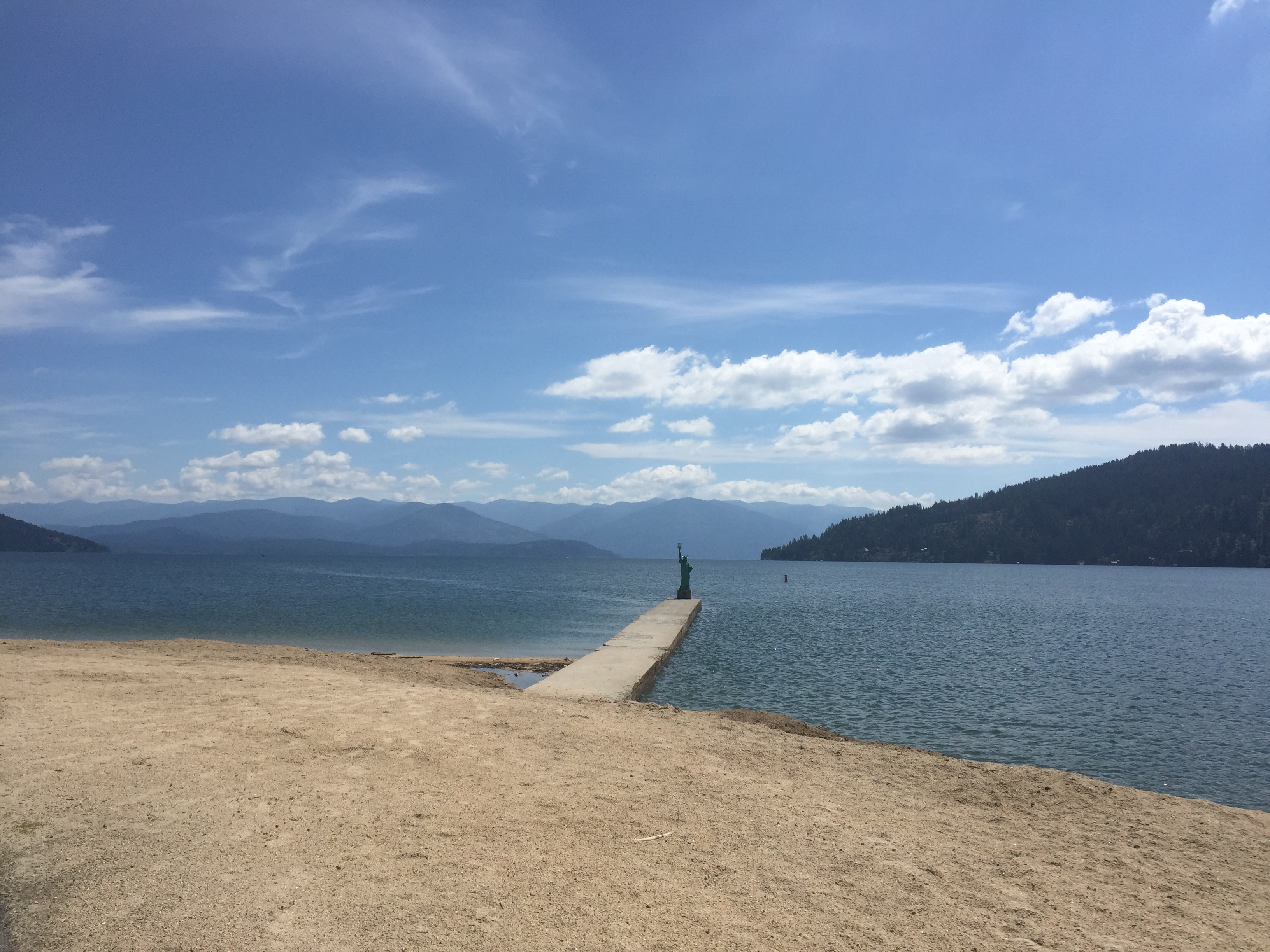
The next night we drove south and boondocked on BLM land next to the Snake River somewhere in the middle of the state. This was our first experience camping on BLM land. BLM= Bureau of Land Management, which manages millions of acres of protected lands, mostly in the western US. Generally, you can camp for free on BLM land and in national forests, either in specific campgrounds (usually with limited to no amenities) or in dispersed (spread out) campsites. There are several apps, like Allstays, that can help you find BLM and national forest sites, but you can always talk to rangers in the local BLM or national forests offices to get the lowdown on the best sites.
The Allstays app directed us to this spot, which was good since we wouldn’t have thought to camp there otherwise. It was basically a flat gravel parking lot next to the river, with a signboard with regulations for fishermen and some vault toilets. There was a road right next to us, up the embankment we parked next to, but other than that it was a fairly private spot and we were the only ones to camp there. We saw a couple pickup trucks, but nobody else. It was nice to eat dinner with the sound of the river in the background.
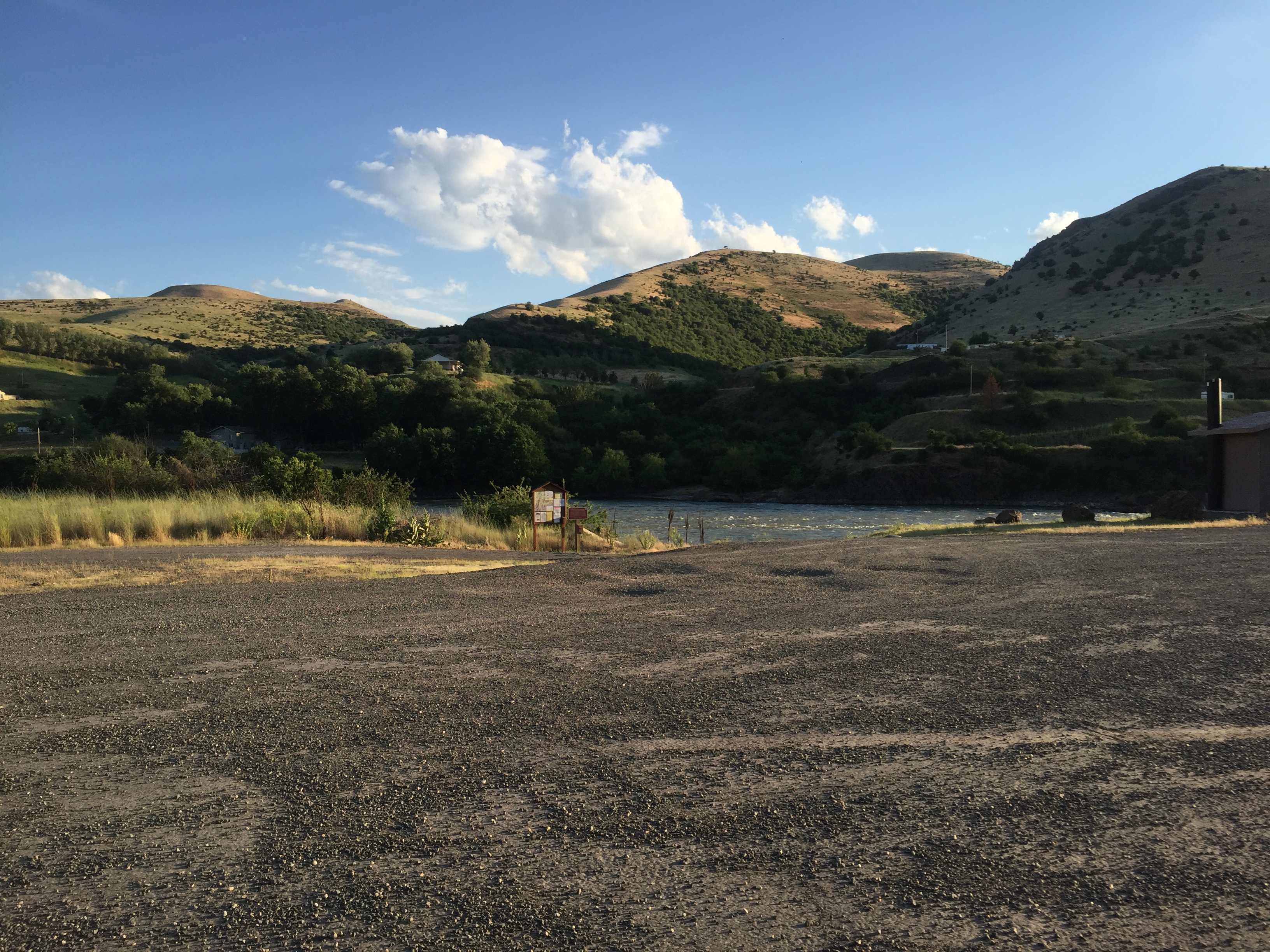
We need to do more research into boondocking on BLM land, but it’s definitely something we’d like to do more of. Do you have any tips or tricks that have helped you find good spots? Please share!
